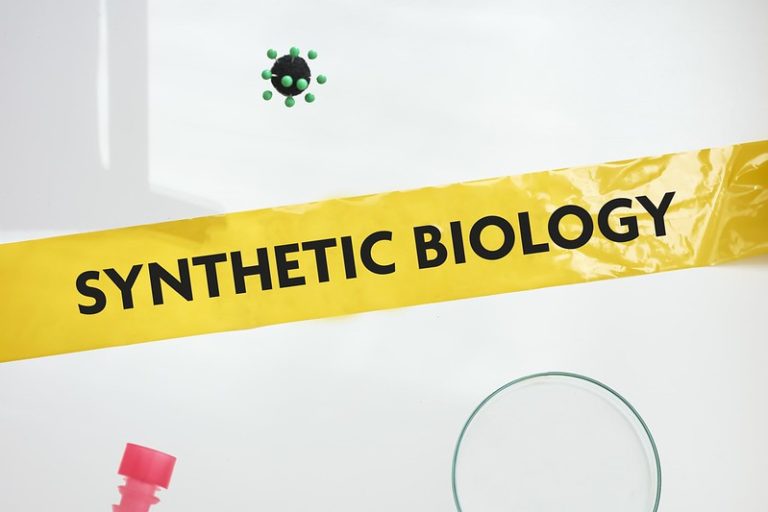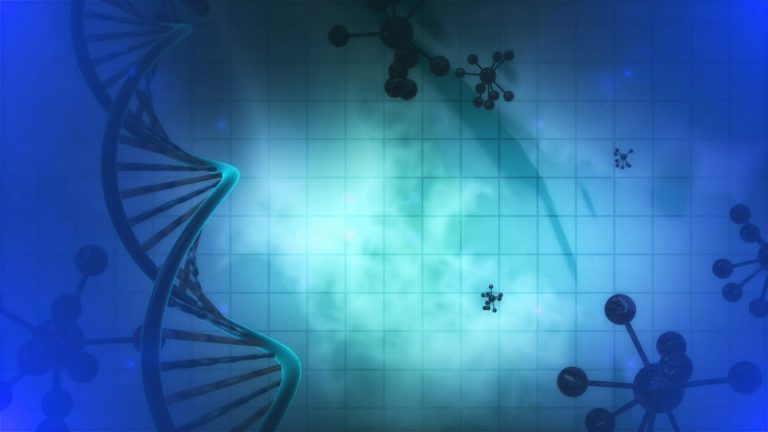News
Synthetic Biology, talks are involving GMOs
For the past fifteen years, governments have been discussing “synthetic biology” on an international level. If to date, an “operational” definition exists, the outlines of this field remain hard to draw. Are talks of “synthetic biology” simply a change of semantics, or a genuinely new frontier of the biotechnology field? For the moment, examples of organisms or molecules obtained by synthetic biology are accumulating: unnatural proteins, GMO plants, GMO bacteria, recreated viruses, modification of living organisms directly in the environment, GMO insects, xenobacteria…

Since 2010, the Convention on Biological Diversity (CBD) has been discussing the regulation of organisms, components and products obtained through synthetic biology. After years of discussions, this area has an operational definition which allows participants to discuss the issue based on information searches conducted within various bodies. For a recent meeting of the CBD, examples of organisms or molecules produced by synthetic biology can be found in the preparatory documents. In Europe, the European Food Safety Authority (EFSA) produced opinions on plants1 and micro-organisms2 between 2020 and 2022, which also list examples of what synthetic biology could entail.
Talking about synthetic biology to avoid talking about GMOs?
These documents show that, to this day, talking about organisms obtained by synthetic biology is in most cases tantamount to talking about GMOs. The EFSA sums things up clearly when it writes that “SynBio is a rapidly developing research field resulting in new techniques likely to be used for the design of GMOs”3. As we shall see, the vast majority – if not all – of the examples provided by the CBD or the EFSA of current synthetic biology products are GMOs or products obtained from GMOs. While the regulatory framework for GMOs has been in place for many years, companies have started using the Synthetic Biology expression in order to attract fundings and, if possible, to reduce the scope of existing legislation such as the one on Living Modified Organisms in the CBD. But in this semantic agglomerating several techniques, organisms or products already regulated as GMOs with achievements that are still theoretical, many people find it difficult to draw the outlines of synthetic biology, following the example of international and European experts.
There are other, less institutional thoughts, perceptions or definitions of what synthetic biology is. Inf’OGM reported on these in a dossier (in french) in 2022, and will come back to them in other articles. In the present article, only the positions adopted by the official bodies – the CBD and the EFSA – about the current achievements of synthetic biology will be discussed, since these are the ones officially on the political table.
Ongoing talks at the international level
Following up on the work of a previous Ad hoc Technical Expert Groups on Synthetcic Biology which was launched in 2013, a “multidisciplinary ad hoc technical expert group on synthetic biology” was set up at the end of 2022 within the CBD. Composed of experts nominated by certain signatory states, social organizations and local community organizations4, this group began its fact-finding work in mid-2023. Reading the preparatory documents for a recent meeting of this group of experts shows that defining synthetic biology is not a consensual exercice5. In 2014, the CBD wrote that “there is no internationally agreed definition of “synthetic biology””6. This situation had to be resolved in order to keep on discussions occurring in the CBD. An “operational definition” was then adopted to this end. In 2016, the CBD finally considered synthetic biology to be “further development and new dimension of modern biotechnology that combines science, technology and engineering to facilitate and accelerate the understanding, design, redesign, manufacture and/or modification of genetic materials, living organisms and biological systems”.
The special group of experts thus inherited in 2022 a list drawn up in 2022 after multiple rounds of peer review by CBD and observers7 of 17 cases to be filled in as examples of the use of “synthetic biology”8. This list includes many of the GMOs or products obtained from GMOs that Inf’OGM recently reported on. These include “self-spreading vaccines for wildlife”, consisting of viruses genetically modified to reproduce in their hosts but with lower virulence; “self-limiting insect systems”, for insects modified by transgenesis (or new techniques of genetic modification) to be sterile; and “gene drives to control vector-borne diseases and invasive species”. Are also listed the “engineered bacteria for nitrogen-fixation and fertilizers”, plants genetically modified by new techniques (GMOs/NTGs), projects to modify the soil microbial population (microbiome), RNA interference to transiently modify agricultural plants, the development of “novel delivery systems and chemistries to modify organisms in the field or in nature”…
Other fields are emerging because of the security and wider issues they directly raise. It has been identified that the synthetic biology approach is also being used to “recreate viruses by chemical DNA synthesis”, which obviously raises questions in terms of possible bioterrorism. As for “artificial intelligence and machine learning”, the international experts believe that this will “inform the engineering or creation of synthetic biology organisms, components and products”. But they underline that these tools are progressing faster, almost too fast, for experts to assess the associated risks and monitor them…
GMO plants developed by synthetic biology…
In 2018, the European Commission mandated its EFSA experts to obtain reports on synthetic biology in plants and micro-organisms fields. In this mandate, the European Commission recalled that it had listed six types of development using synthetic biology: “Genetic part libraries and methods; Minimal cells and designer chassis; Protocells and artificial cells; Xenobiology: DNA synthesis and genome editing […] Citizen science (Do- It-Yourself biology)9”.
As a result, 27 cases of plants obtained by synthetic biology were identified and given as examples (see table 1 below for some of them). The EFSA listed plants genetically modified to have an optimised oil composition, to express bacterial genetic sequences to improve photosynthesis, resistance to abiotic stresses, such as salt, drought or heat tolerance… A genetic modification of wild tomato was also identified (the EFSA speaks of “de novo domestication”). It consists of a wild tomato species modified by new genomic techniques to increase yields and productivity. Other works on non-wild tomatoes has been identified, such as these aiming at modifying their nutritional value or making them produce pyrethrin insecticide molecules.
| Plants | Characteristics | Genetic modification |
|---|---|---|
| Potato | Drought tolerance | Insertion of a genetic sequence by transgenesis |
| Tomato | Higher yields and productivity of wild tomatoes | Six mutations (nucleotides insertion/deletion type) via Crispr/Cas9 expressed by transient transgenesis |
| Production of insecticidal pyrethrine | Insertion of three genetic sequences by transgenesis | |
| Sugarcanne | Lowering lignin content and increasing simple sugar production for agrifuels production | Deletion of 107 genetic sequences via TALEN expressed by transient transgenesis |
| Banana | Resistance to pathogen Sigatoka | Insertion of two genetic sequences by transgenesis |
| Cameline | Modification of oil and fatty acid composition | Insertion of 5 to 7 genetic sequences by transgenesis |
Regarding prospects for commercialization, the EFSA notes that “only few of these projects are sufficiently advanced so that they can be considered as likely to lead to market releases in the near future”. For the EFSA, the future GMO plants derived from synthetic biology that are likely to reach the European market in the coming decade will most probably be obtained by “existing technologies including the insertion of transgenes and genome editing”.
… and GMO micro-organisms too
With regard to microorganisms obtained by synthetic biology, the EFSA has reached the same conclusion as for plants: they are GMOs10. An important observation is nevertheless added for these GMO micro-organisms (GMMs), namely that genetic modifications can “range from being very similar to the ones from GM technology assessed so far or can go (far) beyond with unfamiliar characteristics at the genotypic or phenotypic level, such as in the case of xenobionts”, organisms to which we will come back below.
For its work on GMMs, the EFSA has also carried out an horizon scan. As a preamble, this review is announced as incomplete. The EFSA notes that microorganisms genetically modified by synthetic biology to produce organisms for medical purposes were not included. Such micro-organisms constituted “a significant number of publications found […]. Details revealed that these microorganisms were designed for medical use (e.g. vaccination)”. As the mandate received by EFSA concerned agri-food uses, it did not address this issue. In the end, eleven cases of GMMs obtained by synthetic biology were identified. Of these eleven cases, EFSA gives four as examples, summarized in the table below.
| Micro-organismes | Characteristics | Genetic modification |
|---|---|---|
| Citrus tristeza virus | Resistance to a pathogen (bacteria) | Insertion in the viral genome by transgenesis of three genetic sequences coding a spinach protein with anti-bacteria action by transgenesis |
| Bacteria Klebsiella oxytoca | Fixing atmospheric nitrogen in the soil | Deletion of “non coding” DNA, of « non essential » and “regulating” genetic sequences Reorganisation, via “coding” DNA chemical synthesis, of the “essential” sequences and regulating factors |
| Yeast Saccharomyces cerevisiae | Production of raspberry’s ketone during beer fermentation | Insertion of four genetic sequences (fused or not) by transgenesis |
| Bacteria (xenobionts) | Different, depending on the modifications | Genetic modification to induce the production of protein inexistent in nature with non-natural synthetic amino acid (building bricks pf protein). Production of bacteria with a six-nucleotides DNA instead of four : the four natural nucleotides and two synthetic ones, inexistent in nature. |
The case of “xenobionts”, on which Inf’OGM has already focused (In french), is very special. Xenobionts are non-natural organisms in the sense that they are not found in nature, since their genome or proteins contain, in addition to natural basic elements, elements derived from biochemical synthesis. The EFSA describes them as organisms “made up of non-natural products”. The idea is to produce micro-organisms with a xenoDNA molecule or xenoproteins composed of non-natural synthetic building blocks, in addition to natural ones.
In terms of potential commercial use, the field is open: European experts note that “xeno-proteins acting as enzymes, therapeutic agents, toxins or with other activities could have a substantial potential for medical applications, industrial biotechnology or environmental engineering”. For their part, xenoDNAs are seen as potential “biocontainment or a genetic firewall”, since xenobacteria producing xenoproteins or having a genome composed of xenoDNAs can only multiply if the non-natural building blocks are provided in the environment in which they are found.
Why all this talk about synthetic biology?
Reading the preparatory documents for CBD meetings or the reports of the EFSA, leads to drawing conclusions that organisms obtained by synthetic biology are GMOs. The question remains though for the products obtained from such organisms as the international framework of the CBD concerns the living modified organisms. Some products obtained from GMOs such as RNA sprays (when produced from genetically modified cells/micro-organisms) may indeed not be considered organisms at all, or even non-living or non-autonomously reproducing organisms such as viruses. In Europe, such a question is theoricaly inexistant as products obtained from GMOs are covered by the UE legislation on GMOs.
In the field of biotechnology and GMOs in particular, the industry is usually keen on trying to restrict the scope of a legislation to certain products in order to access the market with its “new products”. It’s been the strategy followed in Europe with the change of semantic aiming at calling GMO plants obtained by new techniques as “NGTs”. The first move from the industry in the CBD was therefore to refuse talking about Synthetic Biology as it considered it should not be under the scope of the CBD. Such a move was finally countered by civil society organisations which succeeded in making Synthetic Biology an issue to be discussed. Years after, iIt now remains to see how talks will move on…
- Mapping of plant SynBio developments in the agri-food sector:
Katharina Unkel et al., « Mapping of plant SynBio developments in the agri-food sector », EFSA Supporting Publications, Volume17, Issue3, March 2020.
EFSA’s opinions of 2021 and 2022 on those GMO plants:
EFSA Panel on Genetically Modified Organisms (GMO), « Evaluation of existing guidelines for their adequacy for the molecular characterisation and environmental risk assessment of genetically modified plants obtained through synthetic biology », EFSA Supporting Publications, Volume19, Issue2, February 2021.
EFSA Panel on Genetically Modified Organisms (GMO), « Evaluation of existing guidelines for their adequacy for the food and feed risk assessment of genetically modified plants obtained through synthetic biology », EFSA Supporting Publications, Volume20, Issue7, July 2022.
↩︎ - Horizon Scan of Synthetic Biology Developments for Microorganisms with application in the Agri-Food Sector:
Cécile J.B. van der Vlugt, « Horizon Scan of Synthetic Biology Developments for Microorganisms with application in the Agri-Food Sector », EFSA Supporting Publications, Volume17, Issue3, March 2020.
EFSA’s opinions of 2021 and 2022 on those GMMs :
EFSA Scientific Committee, « Evaluation of existing guidelines for their adequacy for the microbial characterisation and environmental risk assessment of microorganisms obtained through synthetic biology », EFSA Supporting Publications, Volume18, Issue10, October 2020.
EFSA Scientific Committee, « Evaluation of existing guidelines for their adequacy for the food and feed risk assessment of microorganisms obtained through synthetic biology », EFSA Supporting Publications, Volume20, Issue8, August 2022.
↩︎ - See note 2. ↩︎
- CBD, « Synthetic Biology // Ad Hoc Technical Expert Group », 17 January 2024. ↩︎
- CBD, « Meeting documents // Twenty-sixth meeting of the Subsidiary Body on Scientific, Technical and Technological Advice », 13–18 May 2024. ↩︎
- CBD, « Potential positive and negative impacts of components, organisms and products resulting from synthetic biology techniques on the conservation and sustainable use of biodiversity, and associated social, economic and cultural considerations », 24 September 2014. ↩︎
- https://www.cbd.int/synbio/resources/technical_series ↩︎
- CBD, « Subsidiary Body on Scientific, Technical and Technological Advice », 13 February 2024. ↩︎
- See Sarah Angeli Aguiton’s work who looked at this field of synthetic biology (in french):
Jacques DANDELOT, « Peut-on réguler la biologie synthétique ? », Inf’OGM, 7 May 2018. ↩︎ - See note 2. ↩︎













